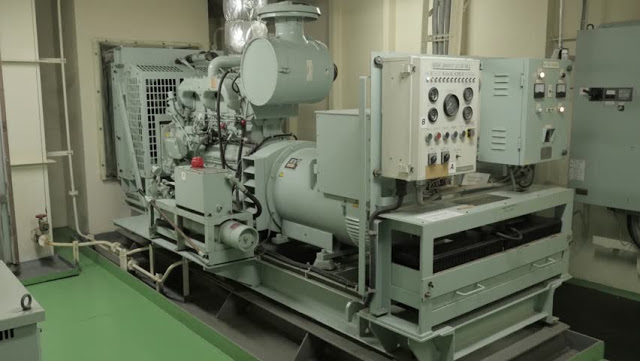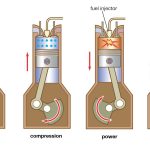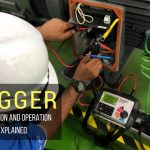A ship is equivalent to a floating city that enjoys almost all privileges available to any operational set-up on land. Just like any conventional city, the ship also requires the basic amenities to sustain life on board, the chief among them being power or electricity. Electricity on ships is generated by an alternator or generator.
Shipboard power is generated when a prime mover and alternator works together. For this purpose, an alternating current generator is used on board. The generator works on the principle that as a magnetic field rotating around a conductor varies, a current is induced in the conductor.
The generator consists of a stationary set of conductors, wound in coils of iron core also known as the stator. A rotating magnet known as rotor turns inside this stator, producing a magnetic field, which cuts across the conductor and generates an induced EMF or electro-magnetic force as

the mechanical input causes the rotor to turn. The magnetic field is generated by induction (in a brushless alternator) and by a rotor winding energized by DC current through slip rings and brushes. Few points that are to be noted about power generated on board ships
-AC, 3-phase power is preferred over DC as it gives more power for the same size –
3-phase is preferred over single phase as it draws more power and in the event of failure of one phase, other 2 can continue working
Power Distribution on Ships:
· The ship’s pow distribution system consists of different components for distribution and safe operation of the system. The main components of this system are:
· Ship’s generator – consists of prime mover and alternator
· Main switchboard – a metal enclosure taking power from the diesel generator and supplying it to different machinery systems
· Bus bars – acts as power carrier and allows transfer of load from one point to another
· Circuit breakers – act as a switch, and in unsafe conditions can be tripped to avoid breakdown and accidents
· Fuses – safety devices for machinery
· Transformers – to step up or stepdown the voltage. When supply is to be given to the lighting system, a step down transformer is used in the distribution system
In a power distribution system, the volt g t which th ship’ s l ct ic l system works is usually 440v. However, there are some large installations wherein the voltage is as high as 6600v.
Power on ships is supplied through circuit breakers to large auxiliary machinery at high voltage. For smaller supply fuse and miniature circuit breakers are used.
The power distribution system, consisting of three wires, can be neutrally insulated or earthed. Insulated system is more preferred as compare to earthed system, as during an earth fault essential machinery such as steering gear can be lost.
Emergency Power Supply:
In case of failure of the ship’s main power generation system, an emergency power system or a standby system is used. The emergency power supply ensures that the essential machinery systems continue to operate the ship.
Batteries or an emergency generator or even both can supply emergency power on ships.
Ratings of the emergency power supply should be such that it is able to support all essential systems such as:
· Steering gear system
· Emergency bilge and fire pumps
· Watertight doors
· Firefighting system
· Ship’s navigation lights and emergency lights
· Communication and alarm systems


